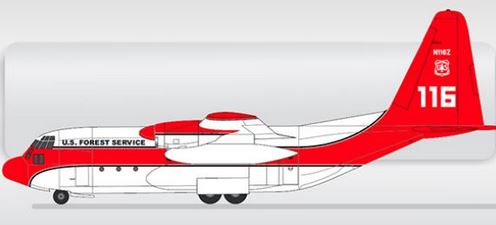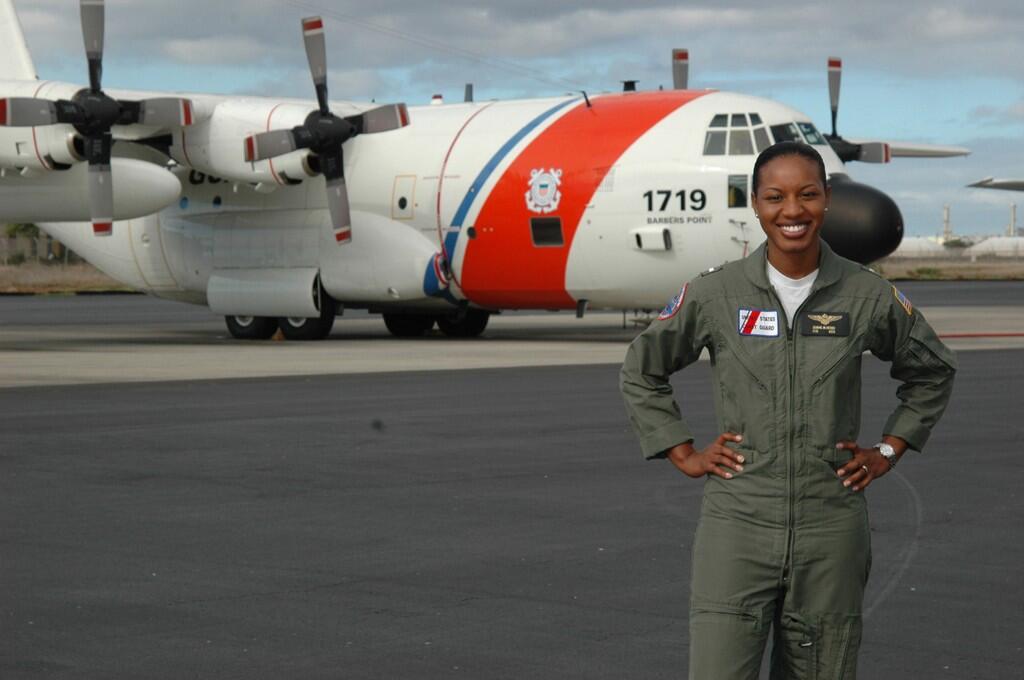
The U.S. Forest Service and the Air Force are taking steps toward installing fire retardant tanks and hiring flight crews for the seven C-130Hs that the USFS acquired from the Coast Guard. The aircraft will be converted into air tankers and will be Government Owned but Contractor Operated (GO/CO).
The Air Force is responsible for performing the required maintenance, replacing the wing boxes as needed, and purchasing and installing retardant tanks in the aircraft. They have issued a Request For Proposals for up to seven “Retardant Delivery Systems” that would have a 3,500-gallon capacity. The presolicitation RFP was first issued in July, but has been changed or amended 12 times. The latest response due date is January 23, 2015. It is obvious that until now the Air Force has never solicited for an air tanker fire retardant tank.
Meanwhile, the USFS has issued a Request for Information (RFI) about potential contractors that would be interested in providing crew(s) for the C-130Hs. They do not intend to award contracts based on the request for information — presumably that would occur later.

The agency’s plan is to operate one C-130H in 2015 and 2015 with a Modular Airborne Fire Fighting System (MAFFS) installed “to provide an initial capability and to gain experience in operating the aircraft while wing and airframe modifications are being completed and gravity tanks are being developed and installed”, according to Jennifer Jones of the U.S. Forest Service.
The USFS does not mention how many crews they would need, but they describe a crew as having 5 personnel:
- 2 US Air Force Trained C-130H/J MAFFS II Qualified Instructor Pilots,
- 1 US Coast Guard trained C-130H Instructor Flight Engineer, and
- 2 US Air Force Trained C-130H/J MAFFS II Qualified Instructor Loadmasters
The aircrew must be current and qualified in the aforementioned requirements within the last two years from the date the solicitation closes. It will be interesting to see how difficult or easy it will be to meet that specification.
The RFI indicates that the aircrew members would be based in Sacramento, California for one year with the option for an additional two years.
In addition, a Project Manager qualified as a U.S. Military C-130H Instructor Pilot will be required to oversee the contractual requirements from Boise, Idaho at the National Interagency Fire Center.
Mrs. Jones said the RFI applies only to the single C-130H that they expect to operate in 2015 and 2016 with a MAFFS tank.
The aircrew description indicates that it would be structured so that they could utilize the slip-in Modular Airborne FireFighting Systems (MAFFS) that have been used since the 1970s in Air Force Reserve and Air National Guard aircraft when there are not enough contracted air tankers available during a busy fire season. A MAFFS has two air compressors that pressurize the 3,000-gallon tank in order to force the retardant out a large pipe that exits the aircraft on the left side through a modified paratroop door.
In a MAFFS-outfitted C-130, two loadmasters operate the MAFFS retardant unit. If the “new” USFS C-130Hs are equipped with a conventional gravity-based retardant tank, it is unlikely that any loadmasters would be necessary.
Planning for seven GO/CO air tankers
Mrs. Jones said the additional six C-130Hs will be brought into service “beginning in 2017, but we don’t have a specific schedule available yet”. We asked for copies of plans the USFS may have about how to incorporate into the fleet and then manage the seven C-130Hs under the new Government Owned/Contractor Operated program. We were told that information would only be available through a Freedom of Information Act request.
The USFS will have similar issues with the 15 Shorts C-23B Sherpa aircraft that they received from the military at the same time they got the C-130Hs.
While we wait for the FOIA request to be honored, lets take a look at the scope of the new GO/CO program.
Based on the first award (that was later cancelled) for the next generation air tankers in 2013, the USFS would have been paying in the range of $50,000 per day for each Contractor Owned/Contractor Operated aircraft — and this may not include the cost of fuel. If we assume that same $50,000 cost for a C-130H with crew, that works out to about $56,000,000 a year for seven, or $560,000,000 for 10 years.
We asked Jack Kendall of OK Aviation what a typical used C-130H would sell for. He said the price varies a lot based on the number of hours on the airframe, the status of programmed maintenance, how much work would have to be done in the cockpit, and whether or not a new C-130J-style wing box has been installed. But he said generally they would sell for $12,000,000 to $20,000,000. Assuming the mid-range price of $15,000,000, the USFS has approximately$105,000,000 worth of C-130Hs if they had been bought on the open market.
In addition, before the aircraft are finally turned over to the USFS, the Air Force is authorized to spend up to $130,000,000 for all of the maintenance and modification work, including installing new wing boxes in at least five of them and putting retardant tanks in all seven. Any additional work would have be paid for by the USFS.
Using these very rough figures, it works out to a program worth about $795,000,000 over ten years. And that does not take into account the 15 Shorts C-23B Sherpas which will probably be used for smokejumpers, cargo, paracargo, and personnel transport.
More than three-quarters of a billion dollars of taxpayer money for the seven aircraft is a very, very large program, especially when it is something the USFS has never done — the beginning of a new GO/CO paradigm. No doubt, as in any major new program, mistakes will be made.
We hope the agency is prepared to take on this new responsibility.
“A goal without a plan is just a wish.” Antoine de Saint-Exupery
